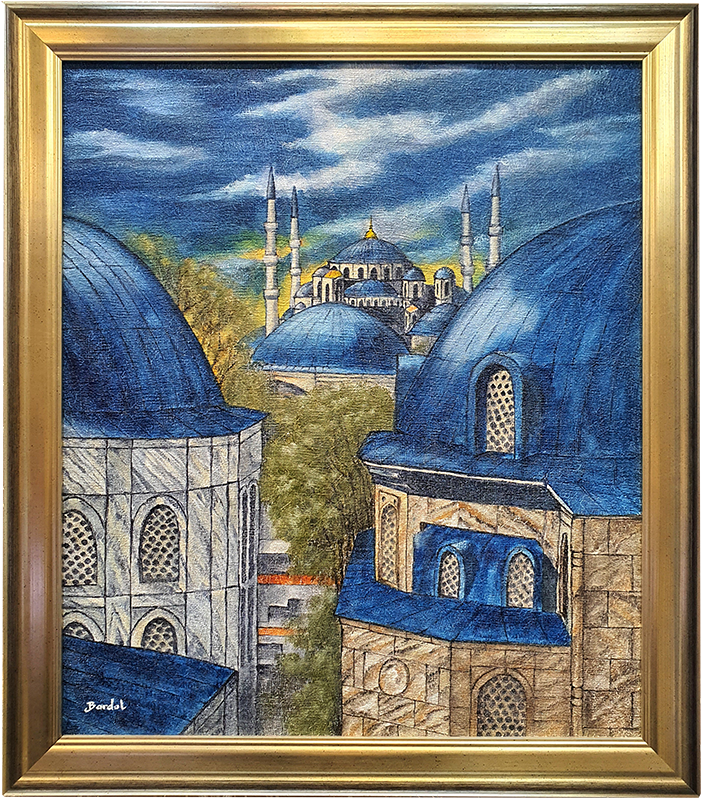The Blue Mosque, officially known as the Sultan Ahmed Mosque or Sultan Ahmet Camii in Turkish, is a significant Ottoman-era mosque situated in Istanbul, Turkey. It is one of the most iconic landmarks in the city and a popular tourist attraction.
Construction of the mosque began in 1609 and was completed in 1616 during the reign of Sultan Ahmed I, for whom it is named. The mosque was designed by the architect Sedefkâr Mehmed Ağa and incorporates elements of both Byzantine and Islamic architectural styles.
The Blue Mosque is renowned for its stunning exterior and interior design. The structure features a large central dome, surrounded by six minarets, which are slender towers from which the call to prayer is traditionally made. The exterior is adorned with beautiful blue İznik tiles, giving the mosque its popular name, the Blue Mosque. These tiles are intricately decorated with floral patterns and calligraphy.
The interior of the mosque is equally impressive, with its grand prayer hall adorned with more than 20,000 handmade ceramic tiles in various shades of blue. The high ceiling of the prayer hall is intricately decorated with intricate patterns and calligraphy. The mosque also houses a large chandelier, crafted from Bohemian crystal, and beautiful stained glass windows.
The Blue Mosque is open to visitors for both prayer and tourism, and it is essential to respect the religious significance of the site when visiting. Visitors are required to remove their shoes before entering, and women are expected to cover their heads with scarves. It is also recommended to visit outside prayer times to avoid disrupting worshippers.
The Blue Mosque’s architectural beauty and historical significance make it a must-visit destination in Istanbul. Its striking design and serene atmosphere provide visitors with a glimpse into the rich cultural and architectural heritage of the Ottoman Empire.
Bardol
Bardol is a talented artist who hails from Andalusia, a region in southern Spain. He is known for his unique blend of Spanish and Muslim cultural influences in his artwork. As a Spanish Muslim, Bardol incorporates elements from both his Spanish heritage and his Muslim faith into his artistic expressions.
Bardol’s works often reflect the rich history and diverse cultural heritage of Andalusia, a region renowned for its historical Islamic influences during the medieval period. His art captures the essence of the Islamic artistic traditions, such as intricate geometric patterns, vibrant colors, and calligraphy, while also incorporating elements from Spanish art, including flamenco, bullfighting, and traditional Spanish architecture.
Bardol’s artwork serves as a bridge between the past and the present, combining traditional techniques with contemporary themes. He explores ideas of identity, spirituality, and the interplay between cultures through his creations. Bardol’s pieces can be seen as a celebration of the harmonious coexistence of different cultural and religious influences in Andalusia, and a testament to the richness of diversity.
His works have garnered recognition both locally and internationally, with exhibitions in prestigious galleries and art institutions. Bardol’s art has the power to captivate viewers, inviting them to appreciate the beauty of Andalusia’s cultural fusion and to contemplate the universal themes he explores through his artistic expression.
The painting was created for Safir Jewelry & Gems by the artist Bardol The artist utilised powder made from natural gemstones
Price: USD 147,000.00


